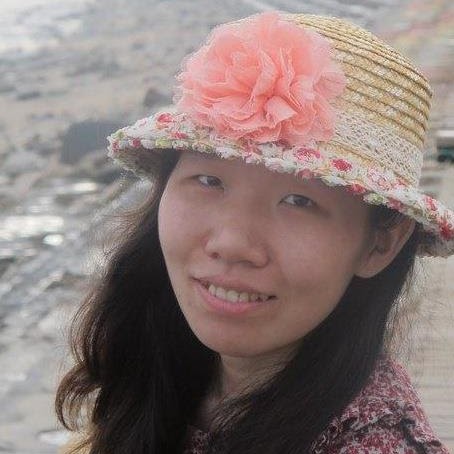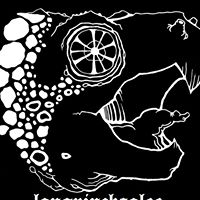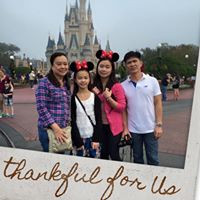Chao E Li
age ~43
from Atherton, CA
- Also known as:
-
- Li Chao
Chao Li Phones & Addresses
- Atherton, CA
- San Carlos, CA
- Emeryville, CA
- Berkeley, CA
- 2120 Medford Rd, Ann Arbor, MI 48104
- Hagerstown, MD
Isbn (Books And Publications)


Medicine Doctors

Chao Li
view sourceName / Title
Company / Classification
Phones & Addresses
President
CHAO LI ELECTRICAL, INC
Electrical Contractor
Electrical Contractor
996 Randolph St, San Francisco, CA 94132
(415)2399688
(415)2399688
MEBOOKS, LLC
Principal
Chao's Family Service
Individual and Family Services, Nsk · Individual/Family Services
Individual and Family Services, Nsk · Individual/Family Services
1474 42 Ave, San Francisco, CA 94122
Us Patents
-
Anomaly Detection For An E-Commerce Pricing System
view source -
US Patent:20220237670, Jul 28, 2022
-
Filed:Apr 15, 2022
-
Appl. No.:17/721594
-
Inventors:- Bentonville AR, US
Elham SHAABANI - Redwood City CA, US
Chao LI - San Carlos CA, US
Matyas A. SUSTIK - San Francisco CA, US -
International Classification:G06Q 30/02
G06K 9/62
G06Q 20/20
G06N 20/00
G06Q 10/06 -
Abstract:This application relates to apparatus and methods for identifying anomalies within data, such as pricing data. In some examples, a computing device receives data updates and selects a machine learning model to apply to the data update. The computing device may train the machine learning model with features generated based on historical purchase order data. An anomaly score is generated based on application of the machine learning model. Based on the anomaly score, the data update is either allowed, or denied. In some examples, the computing device re-trains the machine learning model with detected anomalies. In some embodiments, the computing device prioritizes detected anomalies for further investigation. In some embodiments, the computing device identifies the cause of the anomalies by identifying at least one feature that is causing the anomaly.
-
Multiple Spacer Patterning Schemes
view source -
US Patent:20230093450, Mar 23, 2023
-
Filed:Nov 30, 2022
-
Appl. No.:18/072457
-
Inventors:- Santa Clara CA, US
Rui CHENG - Santa Clara CA, US
Karthik JANAKIRAMAN - San Jose CA, US
Zubin HUANG - Santa Clara CA, US
Diwakar KEDLAYA - Santa Clara CA, US
Meenakshi GUPTA - San Jose CA, US
Srinivas GUGGILLA - San Jose CA, US
Yung-chen LIN - Gardena CA, US
Hidetaka OSHIO - Tokyo, JP
Chao LI - Santa Clara CA, US
Gene LEE - San Jose CA, US -
International Classification:H01L 21/033
H01L 21/311
H01L 21/3213 -
Abstract:The present disclosure provides forming nanostructures utilizing multiple patterning process with good profile control and feature transfer integrity. In one embodiment, a method for forming features on a substrate includes forming a first mandrel layer on a material layer disposed on a substrate. A first spacer layer is conformally formed on sidewalls of the first mandrel layer, wherein the first spacer layer comprises a doped silicon material. The first mandrel layer is selectively removed while keeping the first spacer layer. A second spacer layer is conformally formed on sidewalls of the first spacer layer and selectively removing the first spacer layer while keeping the second spacer layer.
-
Methods And Apparatus For Anomaly Detections
view source -
US Patent:20200380570, Dec 3, 2020
-
Filed:May 30, 2019
-
Appl. No.:16/427238
-
Inventors:- Bentonville AR, US
Elham SHAABANI - Redwood City CA, US
Chao LI - San Carlos CA, US
Matyas A. SUSTIK - San Francisco CA, US -
International Classification:G06Q 30/02
G06K 9/62
G06Q 10/06
G06N 20/00
G06Q 20/20 -
Abstract:This application relates to apparatus and methods for identifying anomalies within data, such as pricing data. In some examples, a computing device receives data updates and selects a machine learning model to apply to the data update. The computing device may train the machine learning model with features generated based on historical purchase order data. An anomaly score is generated based on application of the machine learning model. Based on the anomaly score, the data update is either allowed, or denied. In some examples, the computing device re-trains the machine learning model with detected anomalies. In some embodiments, the computing device prioritizes detected anomalies for further investigation. In some embodiments, the computing device identifies the cause of the anomalies by identifying at least one feature that is causing the anomaly.
-
Methods And Apparatus For Anomaly Detections
view source -
US Patent:20200380571, Dec 3, 2020
-
Filed:May 30, 2019
-
Appl. No.:16/427241
-
Inventors:- Bentonville AR, US
Elham SHAABANI - Redwood City CA, US
Chao LI - San Carlos CA, US
Matyas A. SUSTIK - San Francisco CA, US -
International Classification:G06Q 30/02
G06K 9/00
G06F 17/11
G06Q 10/06
G06N 20/00
G06Q 20/20 -
Abstract:This application relates to apparatus and methods for identifying anomalies within data, such as pricing data. In some examples, a computing device receives data updates and selects a machine learning model to apply to the data update. The computing device may train the machine learning model with features generated based on historical purchase order data. An anomaly score is generated based on application of the machine learning model. Based on the anomaly score, the data update is either allowed, or denied. In some examples, the computing device re-trains the machine learning model with detected anomalies. In some embodiments, the computing device prioritizes detected anomalies for further investigation. In some embodiments, the computing device identifies the cause of the anomalies by identifying at least one feature that is causing the anomaly.
-
Multiple Spacer Patterning Schemes
view source -
US Patent:20200335338, Oct 22, 2020
-
Filed:Mar 17, 2020
-
Appl. No.:16/821759
-
Inventors:- Santa Clara CA, US
Rui CHENG - Santa Clara CA, US
Karthik JANAKIRAMAN - San Jose CA, US
Zubin HUANG - Santa Clara CA, US
Meenakshi GUPTA - San Jose CA, US
Srinivas GUGGILLA - San Jose CA, US
Yung-chen LIN - Gardena CA, US
Hidetaka OSHIO - Tokyo, JP
Chao LI - Santa Clara CA, US
Gene LEE - San Jose CA, US -
International Classification:H01L 21/033
-
Abstract:The present disclosure provides forming nanostructures utilizing multiple patterning process with good profile control and feature transfer integrity. In one embodiment, a method for forming features on a substrate includes forming a mandrel layer on a substrate, conformally forming a spacer layer on the mandrel layer, wherein the spacer layer is a doped silicon material, and patterning the spacer layer. In another embodiment, a method for forming features on a substrate includes conformally forming a spacer layer on a mandrel layer on a substrate, wherein the spacer layer is a doped silicon material, selectively removing a portion of the spacer layer using a first gas mixture, and selectively removing the mandrel layer using a second gas mixture different from the first gas mixture.
-
Multiple Spacer Patterning Schemes
view source -
US Patent:20200335339, Oct 22, 2020
-
Filed:May 5, 2020
-
Appl. No.:16/867095
-
Inventors:- Santa Clara CA, US
Rui CHENG - Santa Clara CA, US
Karthik JANAKIRAMAN - San Jose CA, US
Zubin HUANG - Santa Clara CA, US
Diwakar KEDLAYA - Santa Clara CA, US
Meenakshi GUPTA - San Jose CA, US
Srinivas GUGGILLA - San Jose CA, US
Yung-chen LIN - Gardena CA, US
Hidetaka OSHIO - Tokyo, JP
Chao LI - Santa Clara CA, US
Gene LEE - San Jose CA, US -
International Classification:H01L 21/033
-
Abstract:The present disclosure provides forming nanostructures utilizing multiple patterning process with good profile control and feature transfer integrity. In one embodiment, a method for forming features on a substrate includes forming a first mandrel layer on a material layer disposed on a substrate. A first spacer layer is conformally formed on sidewalls of the first mandrel layer, wherein the first spacer layer comprises a doped silicon material. The first mandrel layer is selectively removed while keeping the first spacer layer. A second spacer layer is conformally formed on sidewalls of the first spacer layer and selectively removing the first spacer layer while keeping the second spacer layer.
-
Silane Based Surfaces With Extreme Wettabilities
view source -
US Patent:20200048841, Feb 13, 2020
-
Filed:Oct 18, 2019
-
Appl. No.:16/657536
-
Inventors:- Ann Arbor MI, US
Chao LI - Ann Arbor MI, US -
Assignee:THE REGENTS OF THE UNIVERSITY OF MICHIGAN - Ann Arbor MI
-
International Classification:D21H 19/10
D21H 17/13
D21H 21/16
D21H 17/11
C09D 5/00 -
Abstract:In various aspects, the present disclosure provides porous materials having extreme wettability to polar or non-polar fluids, such as water and oil. The porous material has a coated surface comprising a low surface energy fluoroalkyl silane that is treated to exhibit at least one type of extreme wettability. In certain aspects, the disclosure provides a porous material comprising a coated surface that is both superhydrophobic and oleophilic, or superhydrophobic and superoleophobic, or superhydrophilic and oleophobic, by way of example. Methods of forming a porous surface having a predetermined wettability are also provided. Other embodiments include fluidic devices that incorporate porous materials having extreme wettabilities, such as microfluidic devices and separators.
-
Silane Based Surfaces With Extreme Wettabilities
view source -
US Patent:20160251803, Sep 1, 2016
-
Filed:Oct 10, 2014
-
Appl. No.:15/027995
-
Inventors:- Ann Arbor MI, US
Chao LI - Ann Arbor MI, US -
Assignee:THE REGENTS OF THE UNIVERSITY OF MICHIGAN - Ann Arbor MI
-
International Classification:D21H 19/10
C09D 5/00 -
Abstract:In various aspects, the present disclosure provides porous materials having extreme wettability to polar or non-polar fluids, such as water and oil. The porous material has a coated surface comprising a low surface energy fluoroalkyl silane that is treated to exhibit at least one type of extreme wettability. In certain aspects, the disclosure provides a porous material comprising a coated surface that is both superhydrophobic and oleophilic, or superhydrophobic and superoleophobic, or superhydrophilic and oleophobic, by way of example. Methods of forming a porous surface having a predetermined wettability are also provided. Other embodiments include fluidic devices that incorporate porous materials having extreme wettabilities, such as microfluidic devices and separators.
Lawyers & Attorneys

Chao Li - Lawyer
view sourceAddress:
(891)0185396 (Office)
Licenses:
New York - Currently registered 2009
Education:
New York University, School of Law
Resumes

Business Analyst At Thomson Reuters
view sourcePosition:
Business Analyst at Thomson Reuters
Location:
Beijing City, China
Industry:
Financial Services
Work:
Thomson Reuters - Z-Park, Haidian District, Beijing since Sep 2011
Business Analyst
N/A Independent Dec 2010 - Dec 2010
Private Placement Agent
Rainbow Nov 2009 - Aug 2010
assistant manager
Business Analyst
N/A Independent Dec 2010 - Dec 2010
Private Placement Agent
Rainbow Nov 2009 - Aug 2010
assistant manager
Education:
University of Bridgeport 2007 - 2009
MBA, MBA
MBA, MBA

Chao Liang Li
view source
Chao Li
view source
Chao Li
view source
Chao Li
view source
Landscape Designer
view sourceWork:
Snøhetta
Landscape Designer
Landscape Designer

Chao Li
view source
Chao Li
view sourceLocation:
United States
Myspace
Googleplus

Chao Li
Work:
Alcatel-lucent - Software consultant engineer

Chao Li
Lived:
Waterford, MI
Education:
Eastern Michigan University

Chao Li
Work:
IHealth Lab Inc - App product manager (2008)
Education:
Tianjin university

Chao Li

Chao Li
Education:
University of California, San Diego - Computer Science
Tagline:
My eyes are greedy

Chao Li
Education:
Xiamen University

Chao Li
Education:
University of California, Irvine - EECS, University of Technology and Science Beijing - EECS

Chao Li
Flickr
Plaxo

Chao Li
view sourcePh.D at CWI

Chao Li
view sourceMD at SUNY Downstate Medical Center
Classmates

Chao Li
view sourceSchools:
Guillaume Vignal School Brossard Kuwait 1993-1997, La Mennais High School La Prairie Kuwait 1997-2002, River of Meadows High School Montreal Kuwait 1998-2002
Community:
Annie Pommainville, Jonathan Ghali, Emilie Paul, Genevieve Hamelin, Julie Lavallee, Virginie Vincent, Stephanie Caron, Amelia Lavoie

Guillaume Vignal School, ...
view sourceGraduates:
Chao LI (1993-1997),
Tania Vincent (1988-1992),
Vincent Fournier (1995-1999),
Pain Your (1985-1989),
Henry Pierre (1982-1986)
Tania Vincent (1988-1992),
Vincent Fournier (1995-1999),
Pain Your (1985-1989),
Henry Pierre (1982-1986)

President Thomas Jefferso...
view sourceGraduates:
Chao Li (1974-1980),
Michael Henry (1977-1978)
Michael Henry (1977-1978)

River of Meadows High Sch...
view sourceGraduates:
Lyson Gosselin (1976-1980),
Chao Li (1998-2002),
Mathieu Sauvageau (2000-2004),
Genevive BAril (1997-2001),
Martine Delisle (1984-1989)
Chao Li (1998-2002),
Mathieu Sauvageau (2000-2004),
Genevive BAril (1997-2001),
Martine Delisle (1984-1989)

Morrow High School, Brook...
view sourceGraduates:
da Chao LI (1990-1994),
Irina Markovskaya (1997-2001),
Michael Piccirillo (1973-1977),
Yan Volodarsky (1996-2000)
Irina Markovskaya (1997-2001),
Michael Piccirillo (1973-1977),
Yan Volodarsky (1996-2000)

South Harrison High Schoo...
view sourceGraduates:
Tomi Standage (2004-2008),
Christy Galvan (1986-1990),
Shanda Maxwell (1979-1983),
Chao LI (2002-2006),
Champagne Murphy (2000-2001)
Christy Galvan (1986-1990),
Shanda Maxwell (1979-1983),
Chao LI (2002-2006),
Champagne Murphy (2000-2001)

Edward Bleeker Junior Hig...
view sourceGraduates:
Jian Chao LI (1995-1999),
Danny Luk (1976-1978),
John McCready (1988-1992),
Rachel Schiffman (1988-1990)
Danny Luk (1976-1978),
John McCready (1988-1992),
Rachel Schiffman (1988-1990)

Walnut Grove High School,...
view sourceGraduates:
Cody Sullivan (2004-2006),
chao LI (1997-2001),
Stephen Schneider (2001-2005),
Tj Code (2001-2005),
Jeremy Schmidt (1993-1997)
chao LI (1997-2001),
Stephen Schneider (2001-2005),
Tj Code (2001-2005),
Jeremy Schmidt (1993-1997)
Youtube

Chao Li
view source
Chao Li
view source
Chao Li
view source
Chao Neng Li
view source
Chao Yang Li
view source
Alexhuang Chao Li
view source
Chao Mei Li
view source
Chao Li
view sourceGet Report for Chao E Li from Atherton, CA, age ~43

















